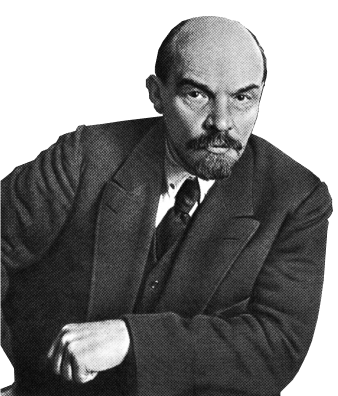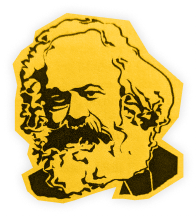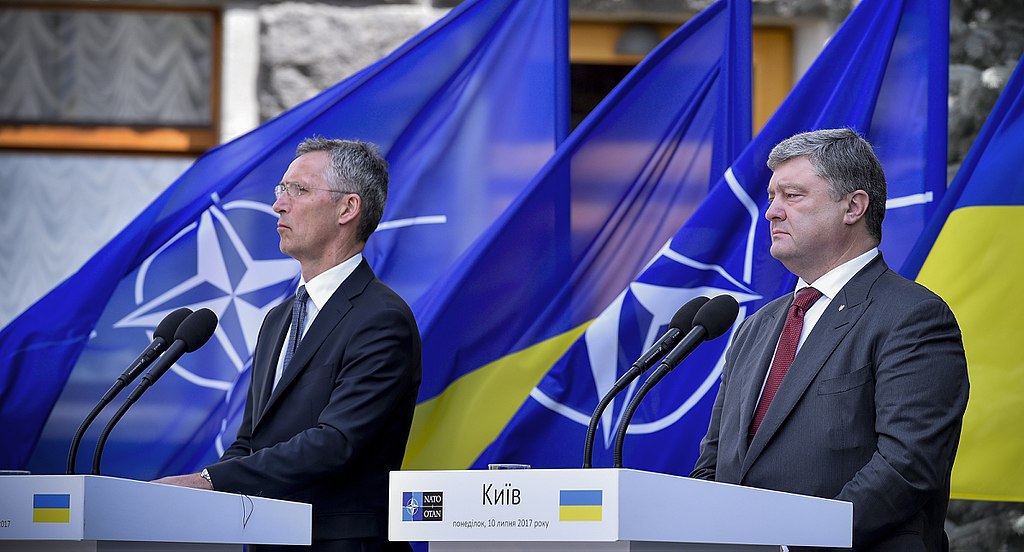
As the Russian army continues to shell the cities of Ukraine, the western press and politicians are doing their utmost to conceal the role of western imperialism in the disaster. Far from being a neutral party, the West have been provoking the conflict for their own imperialist reasons.
As bombs and rockets fall on Ukrainian cities, workers around the world are naturally appalled at the death and destruction caused by the Russian invasion. However, the role that the West has played in this conflict is never explained.
If we think about it for a minute, it is clear that the war in Ukraine is not just a war between Ukraine and Russia, but a proxy war between the western allies and Russia. There is no doubt whose side the West is on. For the past few years, the Ukrainian military has been armed and trained by NATO countries.
Today, Ukraine is seeing its war effort bankrolled by the EU and the US. They are sending both weapons and money in an unprecedented way. Germany has broken its long-standing rule of not sending arms. The House of Representatives just approved $13bn to Ukraine, and so on.
We might ask: where was this money when Ukraine was in the midst of a devastating economic crisis? Now they are at war, it is clearly considered money well spent. When the mass of Ukrainians faced poverty and destitution, that wasn’t so much the case. The fact that western arms manufacturers are making huge profits out of this, is the icing on the cake.
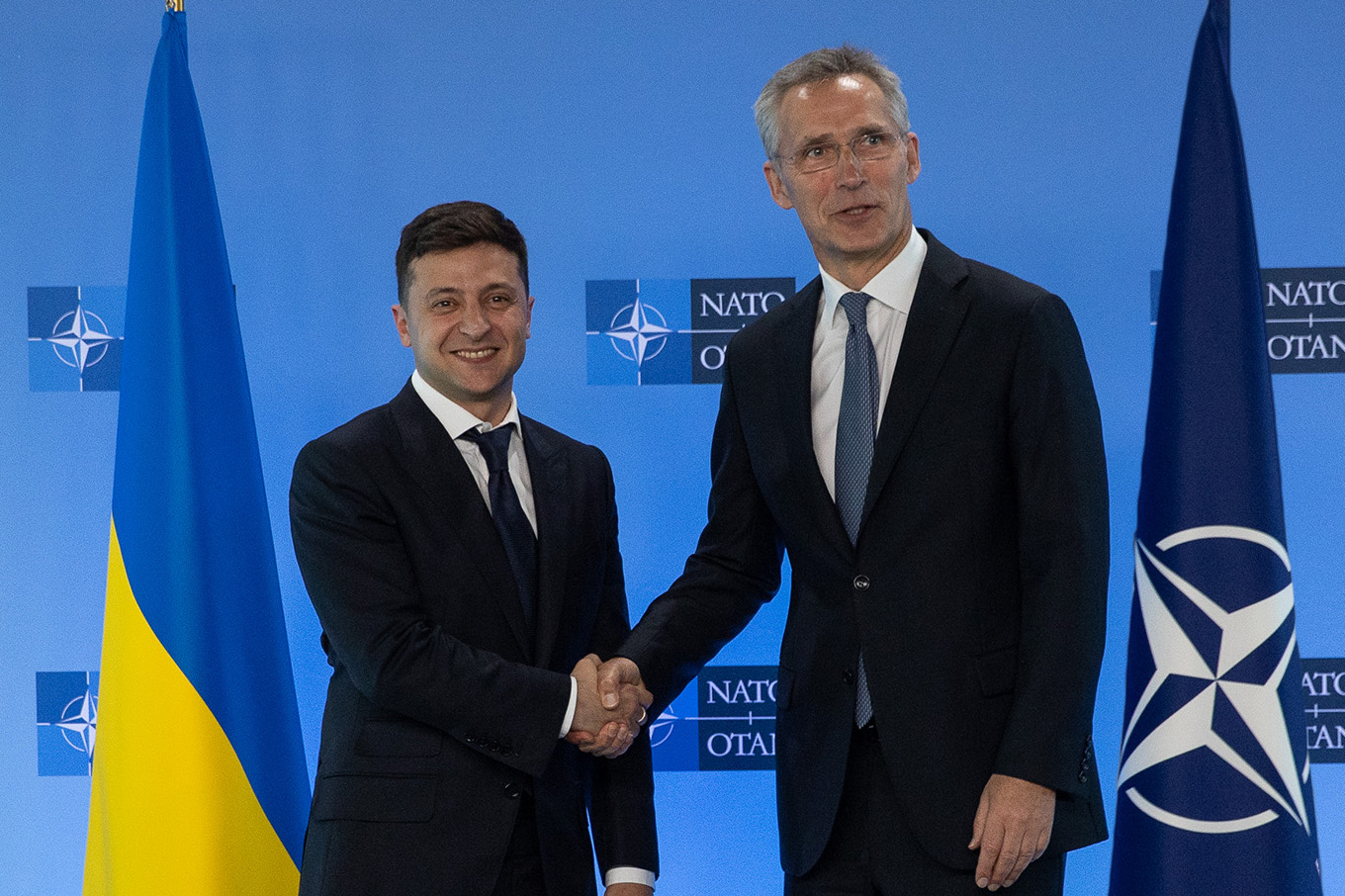
What good will this support do? Very little. If it has its intended consequences, it will prolong the war, but at a devastating cost. Of course, it won’t be politicians, journalists and CEOs in the US or Western Europe who face this devastation, but the millions of Ukrainians who are having their homes and livelihoods destroyed. The Russian army will clearly level Ukraine’s cities to the ground before they allow the country to join NATO.
European workers will also feel the pinch, with skyrocketing energy prices. This is not to mention the workers and poor of Egypt and Lebanon, who are massive consumers of Russian and Ukrainian wheat. Yet, as US President Biden and UK Foreign Secretary Liz Truss made clear, it is “a price worth paying”. Of course, that’s easy for them to say.
For the countries of NATO, there is an important principle at stake: keeping Ukraine firmly in their sphere of influence and not allowing Russian interference. This is tied up in flowery phraseology about sovereignty and self-determination. But behind beautiful phrases, as is so often the case, lie imperialist interests.
Promises made
The root of this conflict can be traced back to the collapse of the Soviet Union. At the time, the Warsaw Pact was in force throughout Eastern Europe. The pact had been created specifically to counter the inclusion of West Germany into NATO. Soldiers of the Soviet Union were stationed throughout Eastern Europe – on the one hand as a guarantee against a western attack, and on the other as a means of securing the control of the state bureaucracy in Moscow over the nations of Eastern Europe.
By 1989, however, the pact was falling apart. The capitalists of the West saw a massive opportunity for new profitable investments all over Eastern Europe, including in Russia itself, as a result of the return to capitalism, which was on the cards in the region. They were very keen to keep the army of the Soviet Union from intervening to reverse the process.
The state bureaucracy of the Soviet Union had used its troops to suppress the revolutionary movements in Hungary in 1956 and in Prague in 1968. At that time, political revolution, rather than the restoration of capitalism, was on the agenda, but there was nevertheless a fear among capitalist politicians that the army would once again intervene. In the military establishment, there was strong support, not for socialism of course, but for the prestige of the military of the Soviet Union and the Warsaw Pact.
The West, therefore, promised a number of things to the leaders of the Soviet Union. In particular, it promised not to expand NATO. George Bush Sr. made a promise to Gorbachev not to take advantage of the various movements in Eastern Europe to harm Soviet security interests in 1989. At the time of German reunification in 1990, this became a particularly sensitive question.
The West German Foreign Minister Genscher gave a speech where he said that in order not to harm Soviet security interests, NATO should rule out “expansion of its territory to the east, i.e. moving closer to Soviet borders”. A treaty on German unification signed by the two German republics, the Soviet Union, France, United Kingdom and United States stipulated that, although the new United Germany was free to join NATO, after the withdrawal of Soviet troops from East Germany (GDR), no foreign troops would be stationed in the former GDR.
Throughout the process, the western powers were very aware that the acceptance of the Soviet Union was conditional on assurances as to the intentions of the West vis-a-vis the Eastern European countries. On 9 February 1990 US Secretary of State James A. Baker made the offer to Gorbachev that NATO would not expand one inch eastward, if the Soviet Union accepted that the new United Germany would join NATO. On the following day, West German Chancellor Kohl promised Gorbachev that “NATO should not expand its scope”. And the promises continued throughout 1990 and the following year.
In March 1991, just a few months before the Warsaw Pact was dissolved John Major told Gorbachev that “We are not talking about the strengthening of NATO” and on the question of NATO expansion that “Nothing of the sort will happen.” The Warsaw Pact was duly dissolved on 1 July 1991.
The National Security Archive of George Washington University compiled a number of documents that show the flurry of diplomatic activity designed to offer assurances to the Soviet leaders: NATO Expansion: What Gorbachev Heard. They really leave no room for doubt about what was promised at the time. But the promises were broken a few years later.
The plunder of Eastern Europe
The oligarchy in Russia that was being created out of the plundering of state assets was not yet strong enough to assert itself. The economy was in free fall and the resistance of the working class hadn’t yet been fully overcome. Russia in the 1990s became a playground for the new oligarchs and western finance capital.
The personification of this process was President Yeltsin, who leaned heavily on the West in order to maintain his rule. If Gorbachev was trying to balance between market reforms and the old planned economy, Yeltsin became the face of open counter-revolution and market reform. At crucial points, the West stepped in to reinforce his position vis-a-vis protesting workers and a wing of the bureaucracy that still hadn’t completely gone over to capitalism.
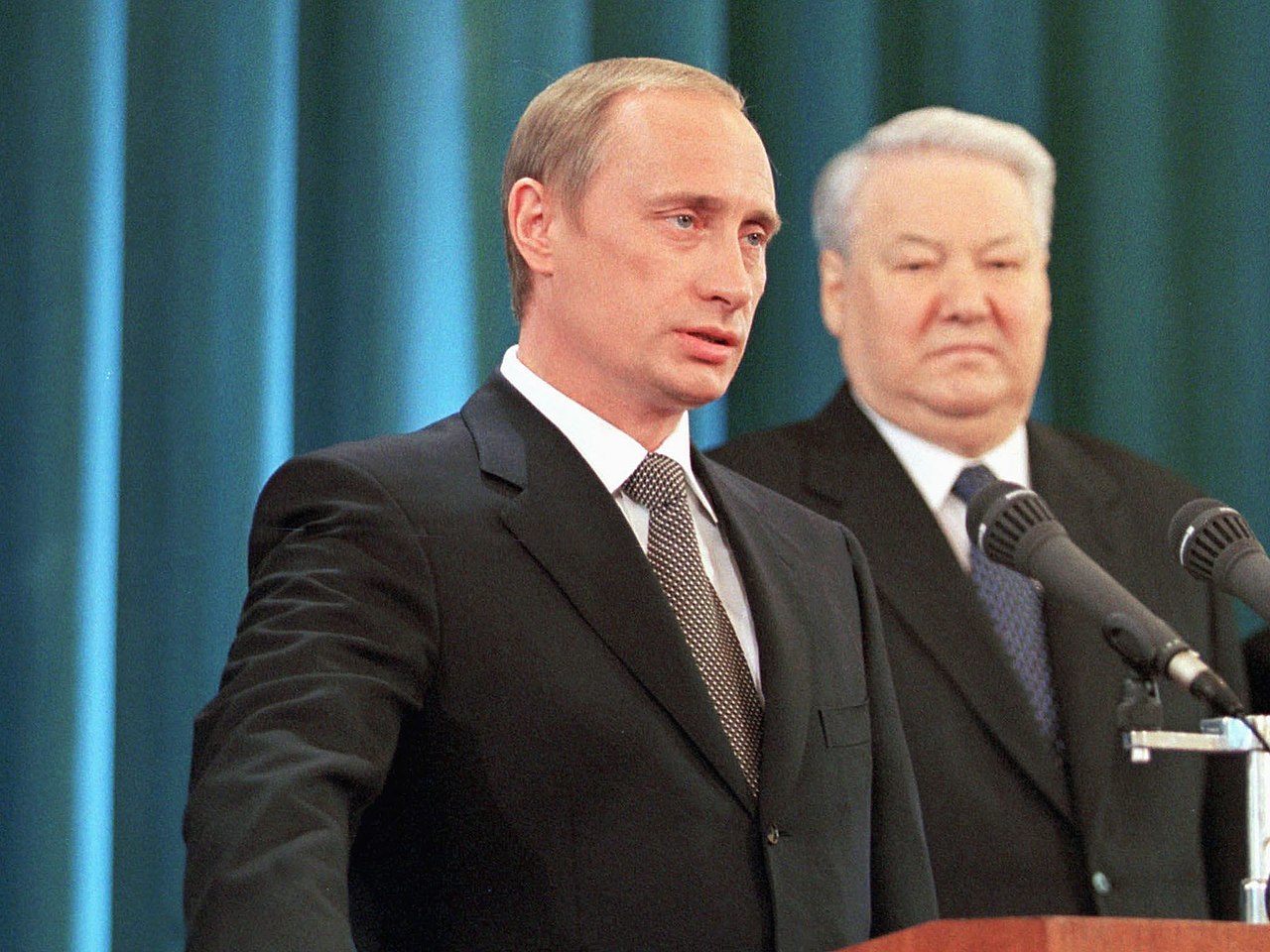
Even when Putin was positioning himself to take over from Yeltsin, he leaned on the West, including public meetings with Tony Blair and others. He was intended to be their new man in Moscow. The restoration of capitalism up to this point had meant the subservience of Russia to western imperialism.
The West was pushing its influence into Eastern Europe. The working class in the region had been thoroughly demoralised and atomised by the process of capitalist restoration. They were ripe for exploitation and western capital moved in to do just that.
German capital played a big role in this, becoming a key player in the economies of Eastern and Central Europe, as well as in the Balkans. In the process, it played a decisive role in the reactionary break-up of Yugoslavia. Swedish finance capital took over banking in the Baltic States (Estonia, Latvia and Lithuania). Industries throughout Eastern Europe were gobbled up by European companies, particularly the ones that were in a good state. The German car producer Volkswagen took over Škoda etc. But these new acquisitions remained vulnerable to a Russia that was starting to find its feet.
The war in Chechnya, where Russia brutally suppressed the local independence aspirations, was a sign that Russia wasn’t quite the pushover it used to be. The war also formed a crucial component in Putin’s presidential campaign. He styled his presidency as one of revival, including the reintroduction of the national anthem of the Soviet Union (with new, nationalist, lyrics).
Broken promises
If the Russian oligarchs were the big gangsters, the little gangsters of Eastern Europe that had become rich on the back of the firesale of state assets were now worried about their bigger neighbour to the east. Formal inclusion in the western sphere of influence was an attractive option.
In short order, between 1999 and 2004 most states of the former Warsaw Pact were incorporated into NATO. The inclusion, in particular of the Baltic States, brought NATO right up to the borders of Russia.
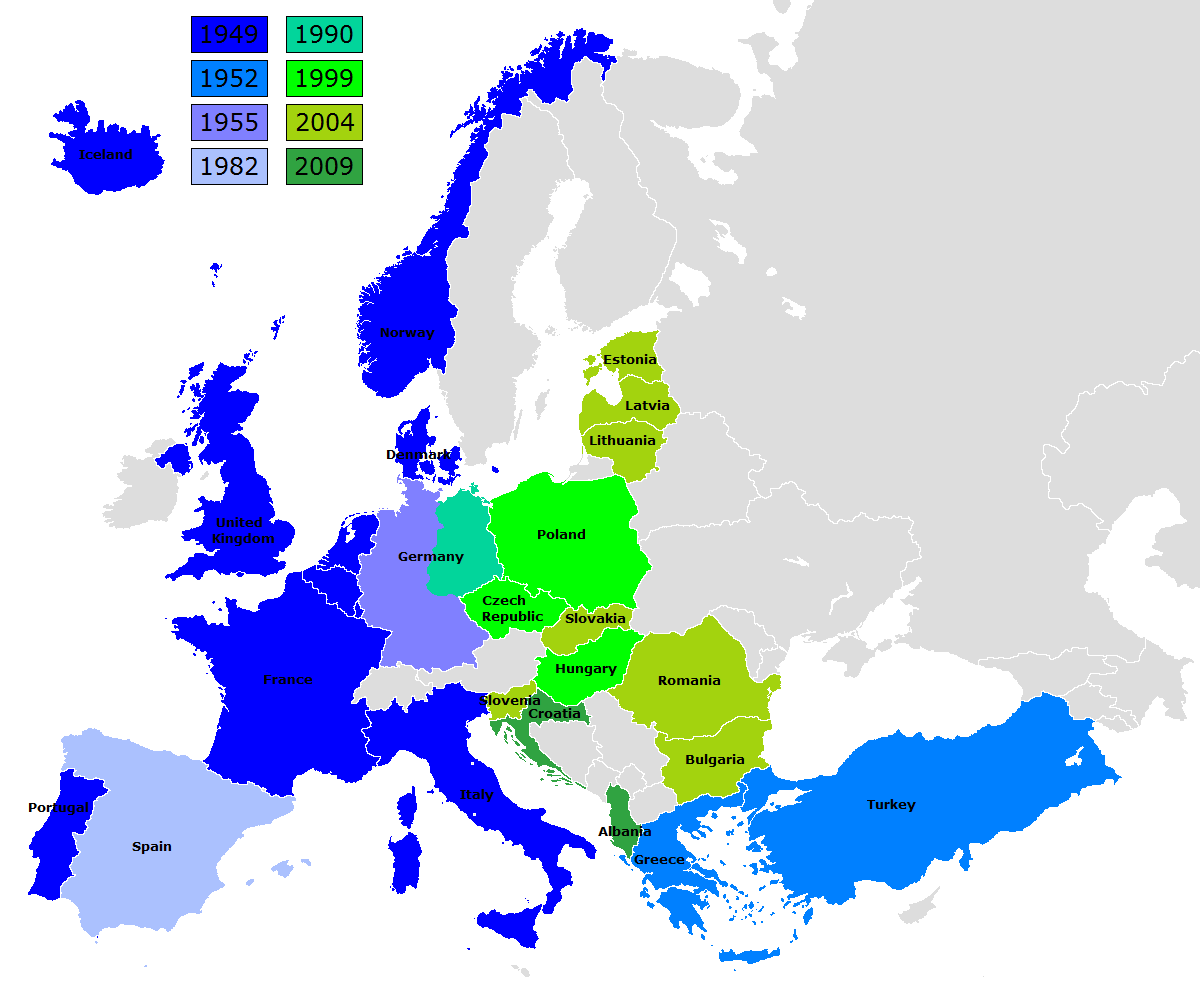
Now, US troops could be readily deployed right on the borders of Russia, some two hours drive from St. Petersburg, although in order to reduce the amount of provocation, no US troops were deployed at that stage. The US was, for now, sticking to that part of the agreement that stipulated that there would be no permanently stationed troops east of Germany. But this wouldn’t last, as we shall see.
Madeleine Albright, Bill Clinton’s Secretary of State, related the Russian opinion of this at the time (1998): “[Russian president] Yeltsin and his countrymen were strongly opposed to enlargement, seeing it as a strategy for exploiting their vulnerability and moving Europe’s dividing line to the east, leaving them isolated.”
About the same time, NATO conducted a 78-day bombing campaign against Yugoslavia (Serbia), which caused enormous economic damage. In a lecture on the 2014 crisis in Ukraine, Professor John Mearsheimer of the University of Chicago explained the significance of this: “NATO not only intervened in the affairs of a non-NATO country, but took sides against the Serbs, allies of the Russians, and did so without United Nations Security Council approval”.
This was followed by interventions in Kosovo, where Russian armoured units had a stand-off with NATO troops; Afghanistan, where the US spuriously triggered the mutual defence article 5; and, more recently, Libya. The implication was clear, NATO wasn’t just a defensive alliance, but something that could be used by the West to further their interests against Russia.
Russia draws a line in the sand
NATO continued its programme of expansion. In 2008, a summit took place in Bucharest where a declaration was adopted. Contrary to the wishes of Ukraine and Georgia, the two countries weren’t immediately approved for membership. Nevertheless, the declaration clearly stated that “NATO welcomes Ukraine’s and Georgia’s Euro-Atlantic aspirations for membership in NATO. We agreed today that these countries will become members of NATO.”
In response to this declaration, Russia’s Deputy Foreign Minister stated: “Georgia’s and Ukraine’s membership in the alliance is a huge strategic mistake which will have the most serious consequences for pan-European security.” Putin called NATO membership of Georgia and Ukraine a “direct threat” to Russia.
In a leaked cable on February 1, 2008, the US ambassador to Moscow explained the Russian position:
“5. (C) Ukraine and Georgia’s NATO aspirations not only touch a raw nerve in Russia, they engender serious concerns about the consequences for stability in the region. Not only does Russia perceive encirclement, and efforts to undermine Russia’s influence in the region, but it also fears unpredictable and uncontrolled consequences which would seriously affect Russian security interests. Experts tell us that Russia is particularly worried that the strong divisions in Ukraine over NATO membership, with much of the ethnic-Russian community against membership, could lead to a major split, involving violence or at worst, civil war. In that eventuality, Russia would have to decide whether to intervene; a decision Russia does not want to have to face.” (Cable: 08MOSCOW265_a)
Around the same time, the US was toying with the idea of setting up a missile defence system in Poland. The Polish government was pushing for this, not so much because it would have protected Poland from missiles, but because it would have established a permanent military presence of the US in the country. The Russian Foreign Ministry issued a statement in July 2008 – using the same words as Putin had in January – stating that if the project goes ahead, “we will be forced to react not with diplomatic, but with military-technical methods”. The Polish project was supposedly defensive, and not directed against Russia, but that was just words.
The question of the positioning of missile systems has a history. The US and their allies like to pretend that posting of US soldiers or missiles in Eastern Europe is not an aggressive move at all. But the US has long held the Monroe doctrine declaring the whole of the Americas a no-go zone for other imperialist powers. We don’t have to imagine what the US would have thought if one of their adversaries were to put troops and missiles in, let’s say, the Caribbean. We already know what their reaction would have been. During the Cuban Missile Crisis, the US threatened nuclear war over the presence of Soviet missiles and troops on Cuba. One could imagine what they would have said if the Chinese placed troops and missiles in Cuba or in Mexico today.
The continued provocations of NATO pushed Russia and Putin to draw a line in the sand. They utilised the unresolved conflict between Georgia and South Ossetia to launch an invasion of Georgia. The war lasted 12 days and ended with Georgia being forced to accept the de facto independence of South Ossetia and Abkhazia. Although this was never part of the formal agreement, it also effectively prevented Georgia from continuing its path to NATO membership.
This could have been the end of it, but the West had not yet given up its hopes of expanding its sphere of influence. Certain concessions were indeed made: the Polish missile base plan was dropped, for example. However, another serious flashpoint was to occur in Ukraine – a flashpoint which was really the prelude to the present war.
The Maidan movement
In 2013, Ukrainian President Yanukovich was negotiating trade agreements with Europe. Yanukovich played the role of attempting to balance between Russia and the West. He had negotiated an association agreement with the EU, but this threatened Ukraine’s relationship with Russia.
Putin opposed the association agreement, correctly seeing it as an attempt to pull Ukraine closer into the orbit of the EU. Oligarchs from Eastern Ukraine sided with Putin, fearing the loss of the Russian market. Putin instead offered trilateral negotiations between the EU, the IMF and Russia, but such an offer was rejected by the EU. This was clearly a take-it-or-leave-it question for the EU, which was not keen on supporting the ailing Ukrainian economy. Its promise of $1bn was paltry, and would have done little. Russia was offering $15bn. No wonder Yanukovich went with the latter.
Angela Merkel commented on the Russian opposition to the deal that “The Cold War is Over.” But the actions of both the Russian government and the West proved that the opposite was the case. She further remarked to Yanukovych that they “had expected more” from him.
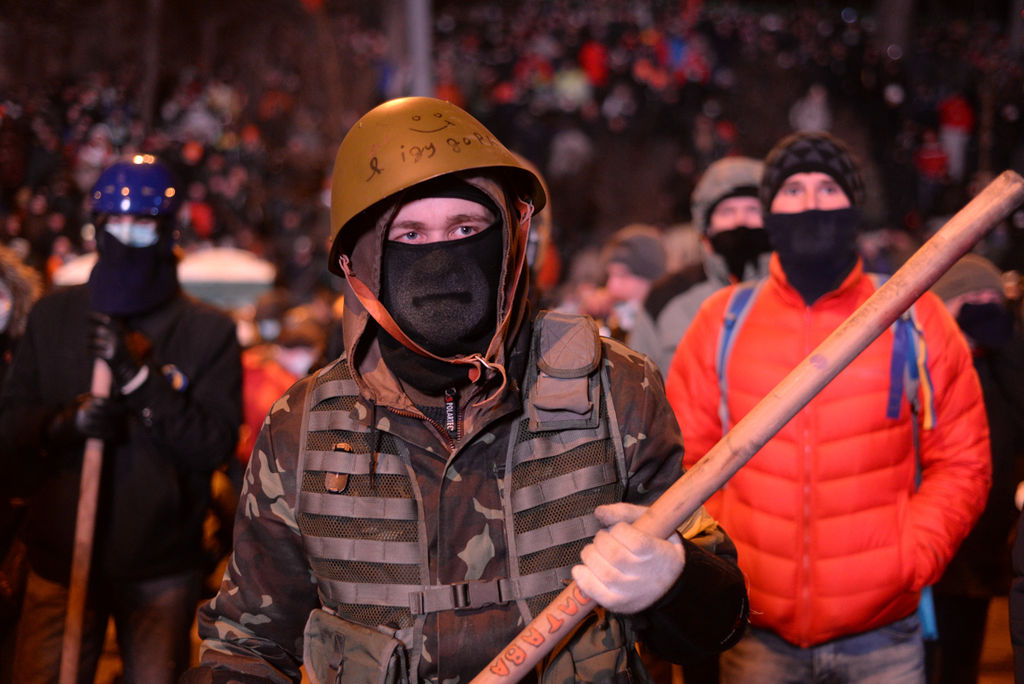
For some time, the association with the European Union had been dangled by the West as a carrot. The promises of easy access to the labour market in the West, investments, etc., led a layer of the population to come out onto the streets in favour of the agreement in November 2013. This was cultivated by EU leaders.
As would be shown by subsequent events, the EU had no intention of providing Ukraine with full EU membership. They were happy to peel Ukraine away from Russia, even at the cost of civil war, but they did not want to provide any serious support. Even now, the EU leaders are opposed to Ukraine joining, however the EU Parliament votes. If Ukraine was to join the EU, they would have access to the EU budget and visa-free travel. This, the EU leaders are not the least bit interested in.
However, as the protests developed, they were happy to defend the right of Ukraine to join the EU. The German Foreign Minister, Westerwelle, said that the rallies in support of the accession agreement showed that “the heart of the Ukrainian people beats in a European way”. But this didn’t mean that they would be allowed to join the EU.
As the protest developed, the US got involved. On 3 December White House Press Secretary Jay Carney stated:
“Violence and intimidation should have no place in today’s Ukraine. We continue to support the aspirations of the Ukrainian people to achieve a prosperous European democracy. European integration is the surest course to economic growth and to strengthening Ukraine’s democracy.”
But the more aggressive wing of the US bourgeois wanted to go still further. Senator John McCain made several bellicose statements and visited the Maidan protests, giving a speech there on 15 December. A coup was being prepared.
An audio recording of a conversation between the US Secretary of State and the US ambassador to Ukraine was posted on Youtube, most likely by Russian intelligence. It is clear evidence that the US was involved in planning the removal of Yanukovych.
The aim of the US involvement was clear: install a government friendly to the West that would sign the EU accession agreement and continue to advocate for Ukraine’s inclusion in NATO. It’s doubtful whether the intention was ever to let them join, but they certainly aimed to continue dangling the hope of economic prosperity (in the form of EU membership) and military security (in the form of NATO membership) in front of the eyes of the Ukrainians.
The coup duly took place on 22 February 2014. The new regime wasted no time in proclaiming their anti-Russian intentions. The day after, 23 February, the Ukrainian Parliament repealed Russian minority language laws. One month after the coup, they signed the accession agreement.
In the process of mobilising against Yanukovich, the imperialists and the pro-western Ukrainian oligarchs revived the ghost of the Nazi-collaborating fascist groups of the Second World War, and neo-nazis provided the shock battalions of the Maidan protests. As we have seen, the new regime incorporated the legacy of the Nazi collaborators in its institutions, including the chant “Glory to Ukraine! Glory to the Heroes!”, which even became the official chant of the Ukrainian army. Disgustingly, it has also been taken up by western liberals over the past few weeks.
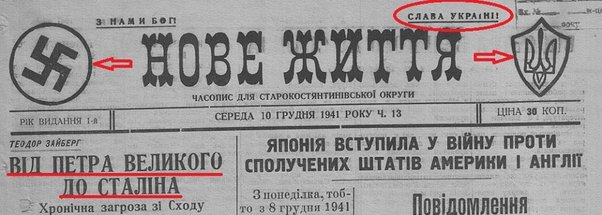
The reaction of Putin and the Russian government was predictably hostile. The new government posed a threat to the Russian naval base in Sevastopol, in particular, and within a month Putin had annexed Crimea to secure Russian access to the Black Sea and the Mediterranean. He also backed – initially reluctantly, and eventually forcefully – the separatist rebels in the Donbas, particularly on the two occasions when it looked like the Ukrainian army was about to defeat them.
Ironically, the achievement of the Ukrainian nationalist movement has been the loss of three important regions of Ukraine. All this was clearly encouraged, from start to finish, by the US, and also, somewhat more reluctantly, by the EU.
NATO’s continued meddling
In 2017 and 2020, NATO added two more countries that were formerly part of the Russian sphere of influence to its alliance: Montenegro and Macedonia. In and of itself, these additions were not decisive, but they demonstrated that NATO was prepared to continue its expansion, even possibly to Ukraine.
The US and the EU continued to incite Ukraine against Russia. They were encouraged to break the Minsk II agreement, which the Ukrainian nationalists had opposed from the start. New drones were provided to Ukraine by Turkey, and the US were supplying Javelin anti-tank missiles. Basically, they were preparing for another offensive in the Donbas. As late as January this year, the secretary of Ukraine’s National Security and Defence Council, Oleksiy Danilov, declared:
“The fulfilment of the Minsk agreement means the country’s destruction. When they were signed under the Russian gun barrel — and the German and the French watched — it was already clear for all rational people that it’s impossible to implement those documents.”
The Ukrainian government continued its hostility towards the Russian-speaking minority: In 2019 Zelensky introduced a language law mandating the use of Ukrainian language in the service industry and for tuition in schools. It was now punishable by law for a waiter to greet someone in Russian, unless the customer had specifically requested this. Similarly, schools that had been conducting their tuition in Russia were now banned from doing so. It was yet another provocation against the Russian minority – and Russia.
And the pressure was kept up. In the spring of 2021, NATO held a massive exercise called “Defender Europe 2021”, including manoeuvres in all the Baltic States and Poland. Ukraine was one of 26 participating countries. According to the US army, the exercise “demonstrates our ability to serve as a strategic security partner in the western Balkans and Black Sea regions while sustaining our abilities in northern Europe, the Caucasus, Ukraine and Africa.” Basically, all the areas that Russia and the West are disputing. NATO would, of course, claim this was not hostile to Russia. But their exercises were about as ‘friendly’ as the Russian exercises in Belarus before the invasion. The exercises also included US B1 bombers skirting Russian airspace, pushing Russia to scramble fighters in response.
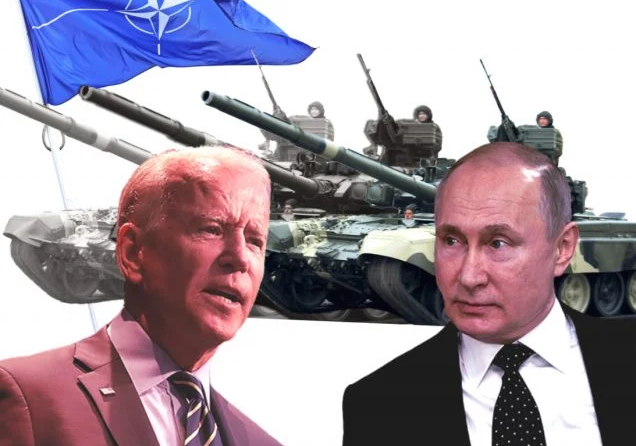
In the summer of 2021, the British government also sent a warship, HMS Defender, into Russian territorial waters, south of Crimea. They were there to “make a point”, which was that Britain does not recognise Crimea as Russian, referring to it as “Ukrainian waters”. In October, the US once again flew bombers around Russian airpsace, this time in the Black Sea. Then, in September, under the guise of ‘Partnership for Peace’, NATO held exercises in Ukraine involving US troops.
Furthermore, NATO countries undertook an effort to train the Ukrainian armed forces. Using the Yaroviv Military Training ground, between Lviv and the Polish border – also known by the Orwellian name of the International Center for Peacekeeping and Security – since 2015, NATO trainers have been shaping the Ukrainian army to NATO standards, including the neo-nazi batallions which are part of the National Guard. This is the military base which was destroyed by Russian bombardment on 12 March.
The whole intention of these exercises, flights, training, etc., is clear. NATO was not even that circumspect about it: they wished to prove their willingness to move troops in Eastern Europe, to prepare for war with Russia, and to support Ukraine in its conflict with Russia. Of course, as events have shown, NATO has no intention of actually fighting a war, but they wanted to send a signal.
Zeeshan Aleem, a columnist at MSNBC expressed it pretty well: “by dangling the possibility of Ukraine’s NATO membership for years but never fulfilling it, NATO created a scenario that emboldened Ukraine to act tough and buck Russia — without any intention of directly defending Ukraine with its firepower if Moscow decided Ukraine had gone too far.”
Professor Maerskheimer put it rather more bluntly back in 2015: “The West is leading Ukraine down the Primrose Path and the end result is that Ukraine is going to get wrecked.” He added:
“What we’re doing is encouraging the Ukrainians to play tough on Russia. What we’re doing is encouraging the Ukrainians to think that they will ultimately become part of the West because we will ultimately defeat Putin and we will ultimately get our way.”
The end result of playing hardball with Russia is that Ukraine is now being destroyed. Whether western leaders like Biden and Johnson actually imagined that Russia would invade Ukraine, we cannot know, but they were clearly prepared to risk it. They were on their high horse throughout the autumn and the winter, defending Ukraine’s right to join NATO, much as they had been defending Ukraine’s right to join the EU. Or maybe, more specifically: their right to apply to join, because so far there is no plan of actually giving them membership of either organisation.
Who is responsible?
As we now approach two million refugees, and with most of Ukraine’s cities under siege and bombardment, many are asking themselves who is responsible for this? The West blames Putin, speculating that he may have gone mad. But if you look beyond the headlines, this conflict is only the rising to the surface of the antagonism between Russia and the countries of NATO.
Western imperialism has been constantly attempting to push forward the boundaries of NATO and the EU. When it has done so, Russia has persistently explained that this was unacceptable. It even threatened to use force. When threats weren’t successful, the Russians actually used force, as in Georgia, in the conflict in Donbas, and in Syria. It was abundantly clear that Russia was prepared to use military measures to enforce its interests.
The West probably didn’t know how far they could push Putin. But they were prepared to gamble with the lives of the Ukrainian people that Putin was bluffing. They persistently provoked, and now the people of Ukraine are paying the price.
This winter, the US could have offered some concessions. The truth of the matter is that the US and the EU were not ready to give Ukraine formal status in NATO or the European Union. They had no such intentions. Something could have been agreed. Putin was asking for assurances in writing, as verbal ones seem to have little value.
Instead, Biden, Johnson and Macron got on their high horse, talking about “Ukrainian sovereignty”, “their right to join NATO”, etc. They were also urging the Ukrainian government to take a hard line: “go ahead, we’re behind you” was the message. This, far from reassuring the Russians, was likely to have made them rather more concerned.
Only Macron and Scholtz seem to have had second thoughts, fearing the cost of millions of refugees, the bill for the reconstruction of Ukraine, and, of course, the threat to the European oil and gas supplies.
The West’s attitude was, and continues to be, that they’re prepared to fight to the last drop of blood for Ukraine’s right to join NATO – the last drop of Ukrainian blood, that is.
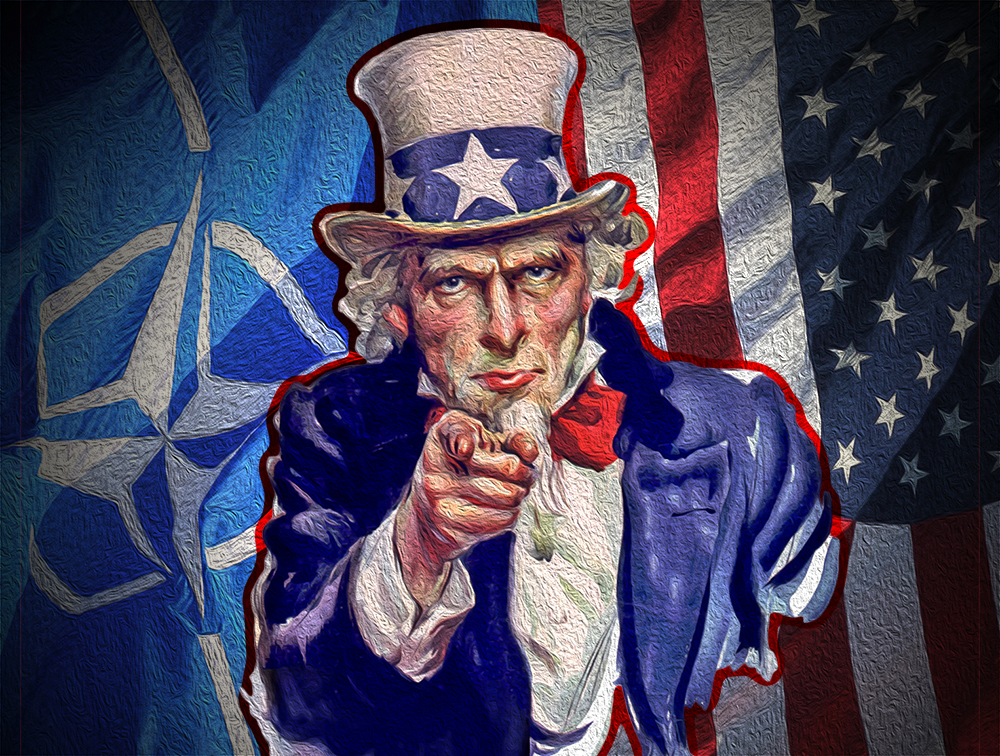
There is, of course, nothing progressive about the Russian invasion. The talk about fighting Nazis, although undoubtedly quite popular in Russia, is merely a smokescreen. The effect of this invasion is, at least temporarily, to strengthen reactionary forces on all sides. It also threatens to foment deep divisions between Russian and Ukrainian workers.
Nonetheless, to see this as just a Russian invasion of Ukraine is quite wrong, and serves to cover up the role that NATO played and continues to play in stoking up tensions. Far from being a defensive alliance, it is an alliance primarily directed against Russia in Eastern Europe, which continues to push its boundaries closer and closer.
NATO, as well as the EU, is a means of furthering western interests in Eastern Europe, against those of Russia, and China, if it comes to that. The war in Ukraine is precisely about the level of influence that NATO countries, primarily the US, Britain, France and Germany, are to have over Ukraine. As the alliance is unwilling to commit its own troops to the fight, it is therefore being played out as a proxy war between the Russian army and the Ukrainian army, funded and supplied by NATO countries.
From this, we can also deduce that this is not at all a war about Ukraine’s “right to self-determination”, or its “sovereignty”, but about which imperial power should dominate it. Is Ukraine to be under Russian domination, western domination, or can they carve up some kind of deal about the mutual exploitation of the country? They failed to resolve this question through diplomatic means and so now they are attempting to settle it through the force of arms. As Clausewitz said, “war is the continuation of politics by other means”.
A little over 100 years ago, Lenin pointed out that capitalism inevitably led to imperialism. In fact, he called his book Imperialism – the Highest Stage of Capitalism. The bourgeoisie and various shades of pacifists and reformists have argued that this is wrong, and that in fact, capitalism, and even imperialism, lead to peace and stability. Such is their ludicrous defence of NATO. If only the US/NATO could dominate all of Eastern Europe, we would have peace, they say. But the truth is concrete and it is precisely the opposite of what they claim.
The collapse of the Soviet Union did not lead to a “peace dividend” as Thatcher and Bush claimed at the time. Military spending is at an all time high, and conflicts between imperialist powers are intensifying around the world. NATO expansion is one of the ways this conflict is being pursued.
This war is the product of conflicting capitalist interests. It is about how far NATO can go in its imperialist aspirations, and how far the smaller imperialist power, Russia, can resist and win back some of its lost spheres of influence.
The task of Marxists is to explain all this patiently to the workers of all countries. We must explain that so long as capitalism survives, conflicts over markets and spheres of influence will continue. The barbarism of capitalism will continue once the war in Ukraine ends, and it will lead to new wars. Only when the workers of all countries finally put an end to capitalism will we see the end of this.
